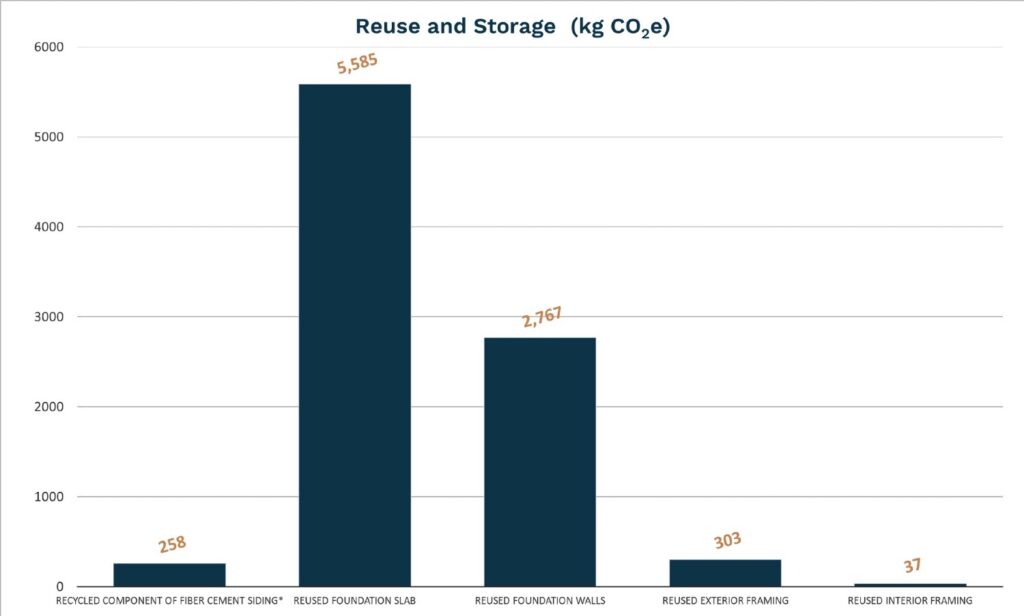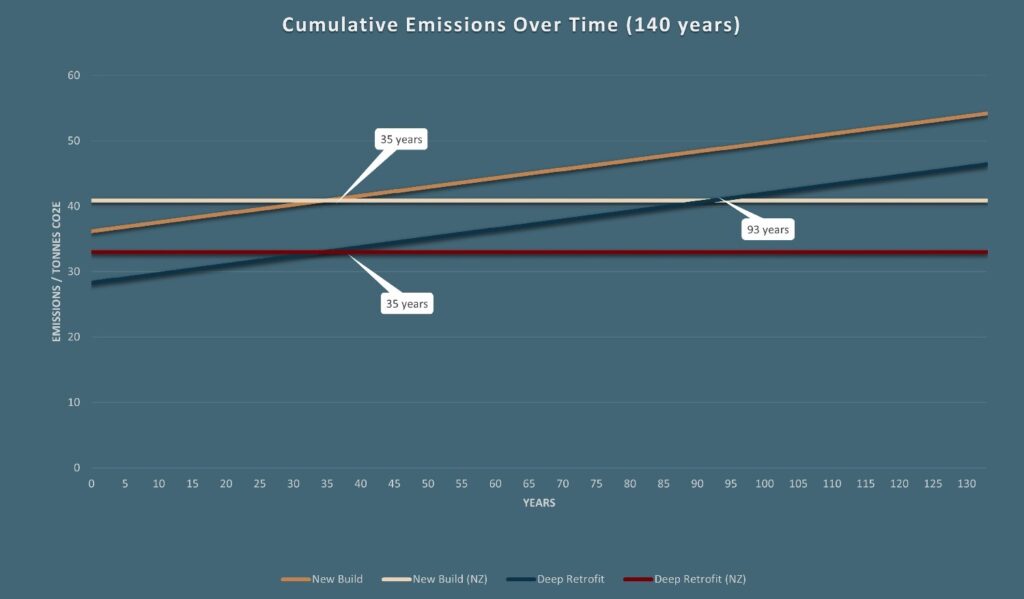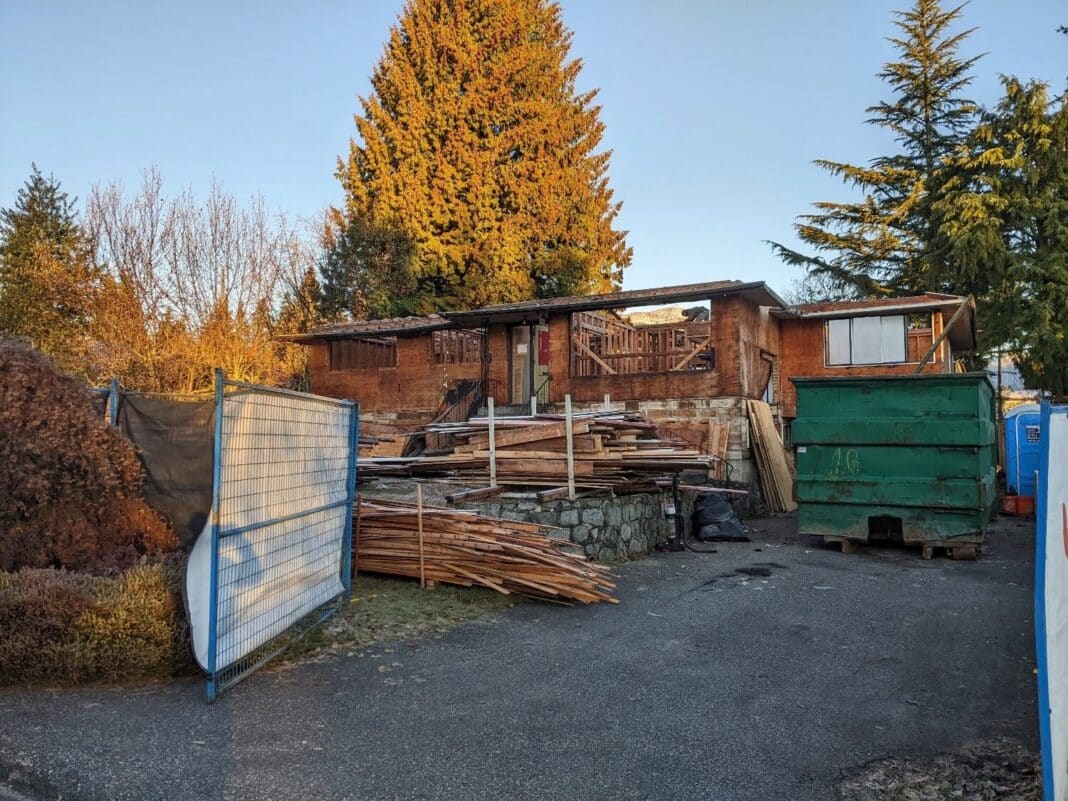Vancouver-based energy and life cycle assessment consultants Carbon Wise has created a case study to investigate the life cycle benefits of deconstructing an existing structure and then undergoing a deep retrofit, as compared to building a new net-zero structure.
“What we were hoping to prove was that it’s better from both an energy and embodied carbon perspective to retrofit a home, instead of the more conventional practice, which would have been to demolish the home and build new,” says Elisabeth Baudinaud, principal of Carbon Wise.
“The numbers confirm this assumption.”
The consultants conducted the life cycle assessments (LCAs) on a one-storey detached home of 274 square metre with a basement originally built in 1958, in North Vancouver, British Columbia.

“In the past, operational emissions have always been the focus of green building policies,” says Baudinaud.
“However, there is an urgent need to address embodied emissions, particularly as new or renovated high-performance homes result in reduced operational emissions,” she said.
“Over time and as we add more materials (more insulation, triple-glazed windows, etc.) to reach energy efficiency targets, embodied emissions will account for an increasing portion of the total emissions and provide a valuable opportunity to further decrease overall emissions from the building sector.”

Gut renovation was determined to be the best choice for minimisng both operational and embodied carbon emissions. (Photo credit: CarbonWise)
The house featured in the case study was initially constructed using 2×4 timber frame building, an attic truss roof, and an unfinished concrete basement. The proposed enhanced home design featured a 2×6 external wall upgrade and a new roof design, which included scissor truss construction and a portion of flat roof.
Additional floor space was incorporated into the above-ground level as an exposed floor area. The basement shape remained unchanged, with minimal extra material included to accommodate the new layout above and changes in rough openings. New framing and insulation were added to the below-grade structure.
The existing roof was nearing the end of its life, and any new design would necessitate significant roof reconstruction. Nevertheless, the decision to reuse the slab and foundation walls proved influential in the analysis, as these components were identified as the largest and most easily achievable carbon savings in this project.

The renovation’s aim was to enhance the home’s energy efficiency to meet the CHBA net-zero standard (CHBA NZ or NZ). The homeowners were concerned not only with their home’s operational emissions but also with the embodied emissions from the materials used to achieve the net-zero renovation.
During the renovation, Vancouver firm Unbuilders disassembled and salvaged the lumber used in framing the parts of the home that would be rebuilt for use in the retrofitted home.
Carbon Wise was engaged as a consultant to carry out a life cycle assessment of the home, which encompassed Unbuilders’ deconstruction (C1) of the original building and linked that process to the production and construction (A1 to A5) of the retrofitted home.
Carbon Wise compared these results with an LCA of a business-as-usual scenario, where the original home would have been demolished, and a new, high-performance home would have been built using entirely new materials. In both instances, they factored in optional photovoltaic (PV) systems required for net-zero operation.
For homes with subpar operational energy performance, net energy savings can be achieved within a relatively short period through either demolition and reconstruction or a deep energy retrofit. The carbon pay-back period in this study was between three and a half to five years.
The carbon benefit of opting for a deep energy retrofit is also evident. Due to embodied carbon savings, the deep retrofit maintains a lower level of net carbon emissions. A deep retrofit, particularly one employing carefully chosen low-carbon materials, can result in considerably below-average embodied emissions (120 kg CO2e/m2) compared to the average of 193 kg CO2e/m2 for a new home.

“Another important thing to note is the high embodied emissions of solar PV systems which, in British Columbia, should not be seen as the solution to climate change if the home is already using electricity from renewable sources,” Baudinaud points out, mentioning that solar panels have a relatively lengthy, 35-year payback when considering the carbon used in their production.
It is important to note that the findings will vary in areas where fossil gas is utilised or where electricity does not come from renewable sources.

An extensive renovation was found to be the optimal choice for minimising both operational and embodied carbon emissions.
For further information and to access the complete case study, click here.
- With extracts from Canadian Architect






